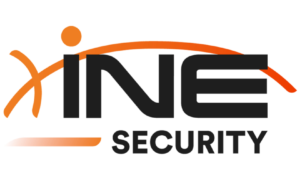Bank reconciliation has long been an essential process for ensuring the accuracy of financial records by matching them with bank statements. While critical, traditional reconciliation methods are often time-consuming, error-prone, and labor-intensive, with rapid advancements in technology, reconciliation is undergoing a transformation. Businesses are now embracing automation, artificial intelligence (AI), and blockchain to streamline processes, reduce costs, and improve accuracy.
This post explores the key trends and innovations shaping the future of bank reconciliation and how organizations can leverage these advancements to modernize their financial workflows.
Emerging Trends in Bank Reconciliation
The reconciliation process is evolving rapidly with the integration of innovative technologies and methodologies. These emerging trends are helping businesses eliminate inefficiencies, reduce manual interventions, and ensure better financial accuracy. Lets explore the transformative trends reshaping bank reconciliation and driving its future.
1. Artificial Intelligence (AI) and Machine Learning
AI and machine learning are revolutionizing the bank reconciliation process by automating complex tasks like transaction matching and anomaly detection. These technologies adapt and improve over time by analyzing historical data, reducing the need for manual intervention. Businesses using AI-powered reconciliation systems report significant reductions in errors and reconciliation times, allowing finance teams to focus on higher-value activities.
For example, AI can identify recurring discrepancies and suggest resolutions, enabling faster financial close processes. Such advancements are particularly valuable for companies processing high volumes of transactions, where minor errors can have substantial consequences.
2. Automated Bank Reconciliation Software
Modern businesses are turning to automated bank reconciliation software to replace outdated manual workflows. These tools integrate seamlessly with enterprise resource planning (ERP) systems, automating tasks like data imports, transaction matching, and discrepancy resolution. The result? Faster reconciliations, improved accuracy, and real-time insights into financial health.
Automated bank reconciliation software offers scalability and efficiency, making it an essential tool for organizations managing large transaction volumes or complex banking relationships. By reducing reliance on manual processes, companies can lower costs while improving compliance and transparency.
3. Real-Time Reconciliation
Real-time reconciliation is becoming a necessity in today’s fast-paced financial environment. With payment systems like real-time payments (RTP) and digital wallets gaining popularity, businesses require tools that can reconcile transactions instantly. Real-time reconciliation enhances cash flow visibility and mitigates risks by addressing discrepancies as they arise, rather than at the end of a reporting period.
This trend is particularly beneficial for industries like e-commerce and retail, where transaction volumes are high, and real-time financial insights are crucial.
4. Blockchain Technology
Blockchain is another innovation transforming the reconciliation landscape. By providing an immutable, shared ledger, blockchain eliminates the need for intermediaries and simplifies the reconciliation process, especially for cross-border payments. The transparency and security of blockchain reduce disputes and enhance trust among stakeholders.
This technology is particularly promising for multinational organizations dealing with multiple currencies and jurisdictions, where reconciliation often becomes cumbersome.
Innovations Driving the Future
Technological innovations are not just enhancing current reconciliation processes but are paving the way for a more streamlined and scalable future. By embracing these advancements, businesses can achieve faster reconciliations, improved compliance, and greater financial control. Below are some of the key innovations that are redefining reconciliation workflows.
1. Robotic Process Automation (RPA)
RPA is increasingly being used to automate repetitive tasks such as data extraction, entry, and validation. RPA bots can fetch bank statements, match transactions, and flag discrepancies for review. This reduces the workload on finance teams while ensuring consistent and efficient reconciliation processes.
2. Advanced Dashboards and Analytics
Data analytics tools are empowering finance teams with real-time insights into reconciliation progress and performance. Dashboards displaying error trends, bottlenecks, and resolution times allow businesses to identify and address inefficiencies. Predictive analytics also helps organizations forecast potential discrepancies, enabling proactive resolution.
3. Cloud-Based Platforms
Cloud-based reconciliation platforms are gaining traction for their scalability, accessibility, and collaboration features. These solutions enable finance teams to access reconciliation data from anywhere, making them particularly useful in remote or hybrid work environments. Additionally, cloud platforms offer real-time updates and integration with other financial tools, ensuring seamless operations.
4. Integration with APIs and Open Banking
Open banking and API-driven integrations are enabling seamless data exchange between banks, accounting platforms, and reconciliation tools. This level of connectivity reduces manual data entry and ensures real-time updates, enhancing both accuracy and efficiency. Businesses operating across multiple banks can particularly benefit from API-based solutions that centralize reconciliation workflows.
Why These Innovations Matter
Adopting advanced technologies in bank reconciliation provides tangible benefits for businesses:
- Increased Efficiency: Automation significantly reduces reconciliation times, freeing up resources for strategic initiatives.
- Improved Accuracy: AI and machine learning minimize errors and enhance the reliability of financial records.
- Enhanced Transparency: Real-time updates and blockchain-based records improve visibility into financial transactions.
- Cost Savings: By reducing manual labor, businesses can lower operational costs while improving scalability.
According to recent reports, automation in financial processes not only saves time but also creates systems that are scalable and resilient. These technologies are no longer optional but necessary for businesses looking to thrive in an increasingly competitive market.
Conclusion
The future of bank reconciliation lies in adopting technologies like AI, blockchain, and automation to simplify and optimize processes. These advancements empower businesses to achieve faster reconciliations, maintain accurate records, and gain real-time financial insights. As transaction volumes and complexities grow, organizations that embrace these innovations will be better equipped to adapt to changing financial landscapes.
By investing in modern reconciliation tools, businesses can future-proof their financial operations, ensuring efficiency, compliance, and scalability for years to come.



































